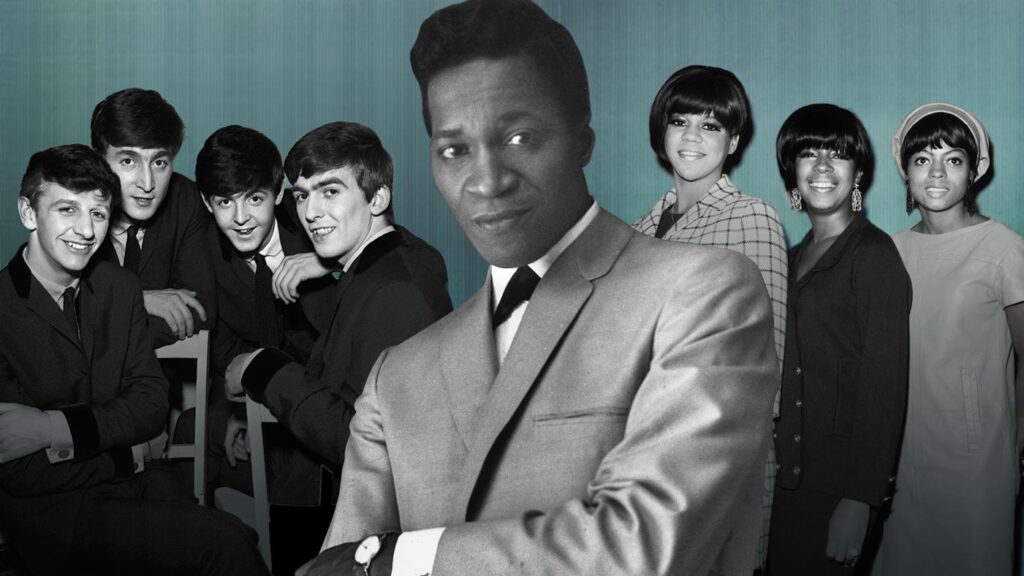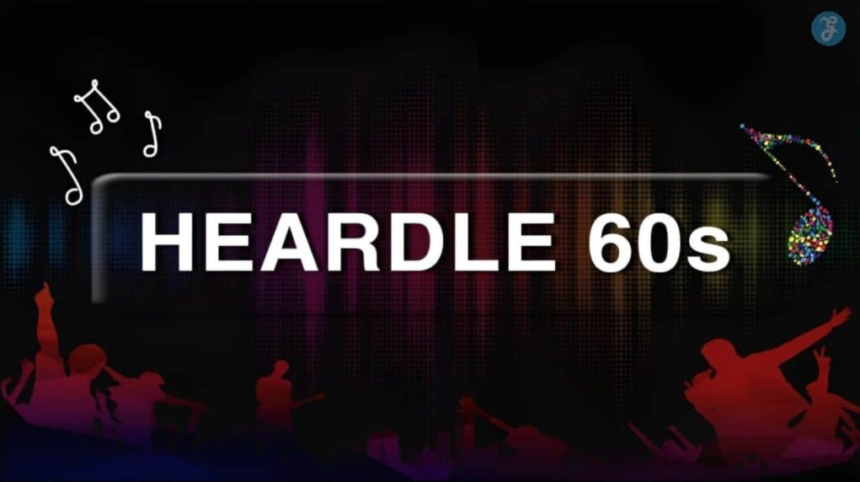The 1960s were a decade of profound change, marked by cultural upheaval, social revolution, and a groundbreaking evolution in music. As the world moved from the buttoned-up 1950s into a more liberated and experimental era, the sonic landscape of the time shifted dramatically. One platform that captures the essence of this transformative decade is Heardle 60s, an innovative game that challenges users to identify songs from this iconic period. This article delves into the significance of Heardle 60s, explores the musical trends of the decade, and reflects on the broader cultural impact of the era’s music.
The Concept and Appeal
Heardle 60s is a musical game that offers a nostalgic journey into the soundscape of the 1960s. Drawing inspiration from the popular game Heardle, which tasks players with guessing songs based on brief audio clips, Heardle 60s zeroes in on a specific decade known for its vibrant and diverse musical output.
How It Works
In Heardle 60s, players are presented with short snippets of popular tracks from the 1960s and must guess the song title and artist based on these brief audio cues. The game typically provides several opportunities to hear increasingly longer segments of the song before making a guess. This format not only tests players’ knowledge of 60s music but also challenges their ability to recognize songs from a brief sound bite.
Why It Matters
The appeal of Heardle 60s lies in its ability to engage both casual listeners and die-hard fans of 60s music. For casual listeners, it offers a fun and interactive way to discover or rediscover classic tracks from the decade. For enthusiasts, it serves as a nostalgic trip down memory lane, a chance to test their knowledge and relive the musical innovations that defined an era.
Musical Trends of the 1960s

To fully appreciate Heardle 60s, it’s essential to understand the musical trends that characterized the 1960s. The decade was a melting pot of genres and styles, each contributing to a rich and varied soundscape.
The Rise of Rock and Roll
Rock and roll, which had its roots in the 1950s, continued to evolve in the 1960s, becoming a dominant force in popular music. This period saw the emergence of various rock subgenres, including:
British Invasion: The British Invasion was a significant cultural phenomenon, with bands like The Beatles, The Rolling Stones, and The Who leading the charge. The Beatles, in particular, revolutionized popular music with their innovative songwriting and recording techniques. Tracks like “She Loves You” and “A Hard Day’s Night” became anthems of the era.
Psychedelic Rock: Psychedelic rock emerged as a genre characterized by experimental sounds and lyrical themes influenced by the burgeoning counterculture movement. Bands such as The Grateful Dead, Jefferson Airplane, and The Doors experimented with extended improvisations, surreal lyrics, and innovative studio effects. The Doors’ “Light My Fire” and Jefferson Airplane’s “White Rabbit” are quintessential examples.
Garage Rock: Garage rock, known for its raw sound and energetic performances, found its voice in bands like The Sonics and The Seeds. This genre laid the groundwork for the future punk rock movement. Tracks like “Louie Louie” by The Kingsmen exemplify the genre’s straightforward and rebellious spirit.
The Folk Revival
The folk revival of the 1960s was marked by a return to acoustic instruments and an emphasis on lyrical content. Influential artists like Bob Dylan, Joan Baez, and Pete Seeger brought folk music into the mainstream, using their songs to address social and political issues. Dylan’s “Blowin’ in the Wind” and Baez’s “Diamonds and Rust” reflect the genre’s depth and social relevance.
Soul and Motown
Soul music and the Motown sound also gained prominence in the 1960s, bringing a new level of sophistication and emotional depth to popular music. Labels like Motown Records, founded by Berry Gordy Jr., produced numerous hits by artists such as Stevie Wonder, The Supremes, and Marvin Gaye. Songs like “My Girl” by The Temptations and “I Heard It Through the Grapevine” by Marvin Gaye exemplify the genre’s smooth and influential style.
The Emergence of Experimental and Progressive Rock

The late 1960s saw the rise of experimental and progressive rock, with bands pushing the boundaries of traditional rock music. Pink Floyd, with albums like “The Piper at the Gates of Dawn,” and King Crimson, with “In the Court of the Crimson King,” began exploring complex structures and conceptual themes, setting the stage for future developments in rock music.
Cultural Impact of 1960s Music
The music of the 1960s was not only a reflection of the era’s cultural and social changes but also an influential force in shaping those changes. The decade’s diverse musical landscape contributed to the broader cultural revolution that defined the period.
The Role of Music in Social Movements
Music played a crucial role in the social and political movements of the 1960s. Songs became anthems for civil rights, anti-war protests, and the counterculture movement. Bob Dylan’s “The Times They Are A-Changin’” and Edwin Starr’s “War” became rallying cries for social change, reflecting the era’s spirit of activism and reform.
The Influence of Music on Fashion and Lifestyle
The music of the 1960s also had a profound impact on fashion and lifestyle. The Beatles’ iconic mop-top haircuts and mod fashion influenced a generation’s style, while the psychedelic rock scene inspired vibrant, experimental clothing and artwork. The convergence of music, fashion, and lifestyle created a distinctive cultural aesthetic that defined the decade.
The Legacy of 1960s Music

The legacy of 1960s music is enduring, with its influence still evident in contemporary music and popular culture. The genre innovations of the decade laid the groundwork for subsequent developments in rock, folk, soul, and other genres. Modern artists often draw inspiration from the sounds and styles of the 1960s, paying homage to the creativity and experimentation of the era.
Discovering 60s Music Through Heardle 60s
Heardle 60s serves as a modern gateway to experiencing and appreciating the music of this influential decade. By engaging with the game, players can gain a deeper understanding of the diverse sounds and styles that characterized the 1960s. The game not only tests players’ knowledge but also provides an opportunity to explore the rich musical heritage of the era.
The Joy of Rediscovery
For many, Heardle 60s offers a chance to rediscover classic tracks and artists that may have faded from contemporary consciousness. The game can introduce players to lesser-known gems and encourage a broader appreciation of the era’s musical diversity.
Fostering a Connection to the Past
Engaging with Heardle 60s can foster a connection to the past, bridging generational gaps and creating a shared appreciation for the music that shaped modern culture. By revisiting the sounds of the 1960s, players can gain insight into the social and cultural context of the time and appreciate the lasting impact of the decade’s musical innovations.
Educational Value
Heardle 60s also has educational value, offering a fun and interactive way to learn about music history. The game can serve as a tool for teaching about the evolution of popular music, the influence of various genres, and the cultural significance of the 1960s. It can be used in educational settings to engage students with music history in an engaging and memorable way.
Conclusion: The Enduring Magic of the 1960s
The 1960s were a decade of unparalleled musical innovation and cultural transformation. From the rise of rock and roll to the influence of folk, soul, and psychedelic music, the decade left an indelible mark on the world of music and beyond. Heardle 60s provides a modern platform for exploring and celebrating this vibrant era, offering a unique way to engage with the music that defined a generation.
As players interact with the game and delve into the sounds of the 1960s, they not only test their knowledge but also participate in a broader cultural appreciation. The legacy of 1960s music endures through the innovative spirit of the era, and platforms like Heardle 60s help keep that spirit alive. By revisiting the songs and artists of the past, we honor the creativity and influence of the 1960s and ensure that its musical magic continues to resonate with new generations.







